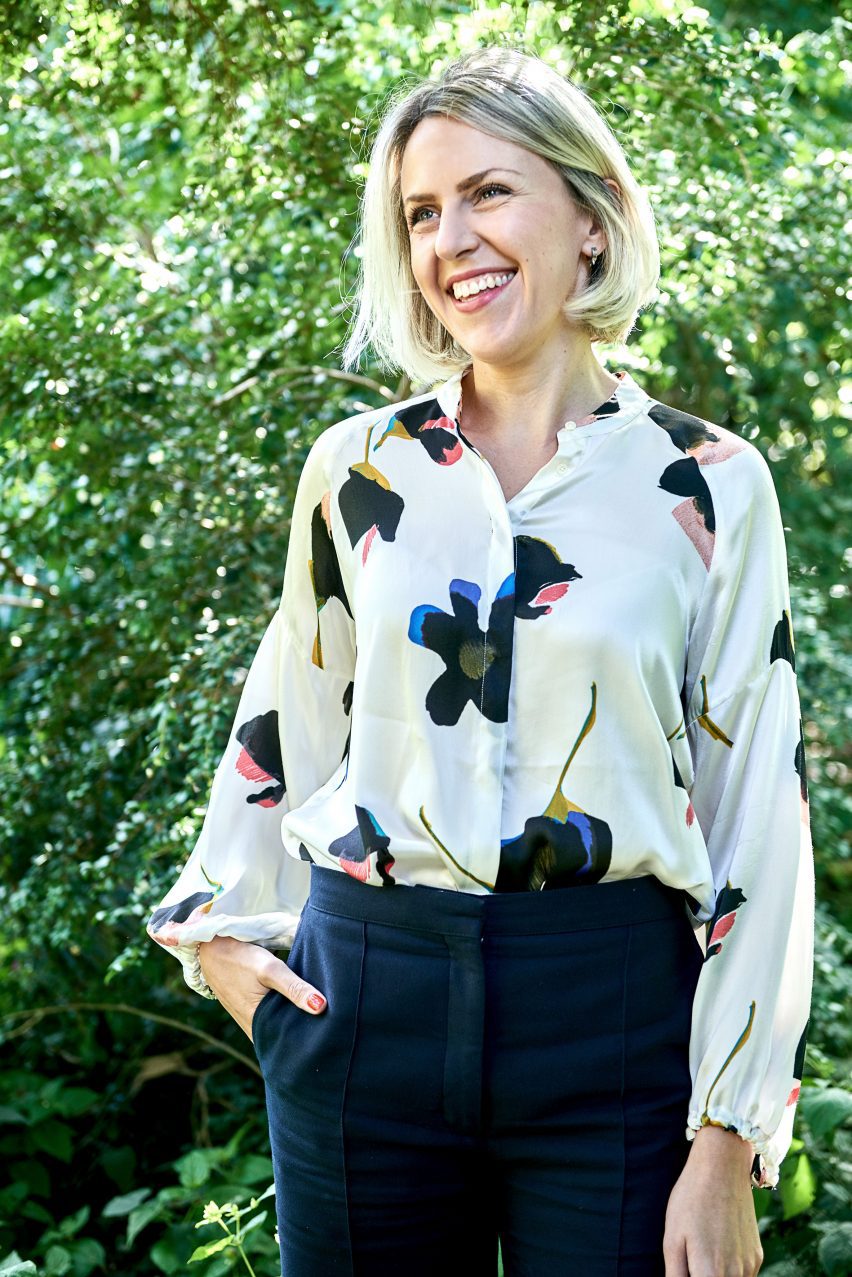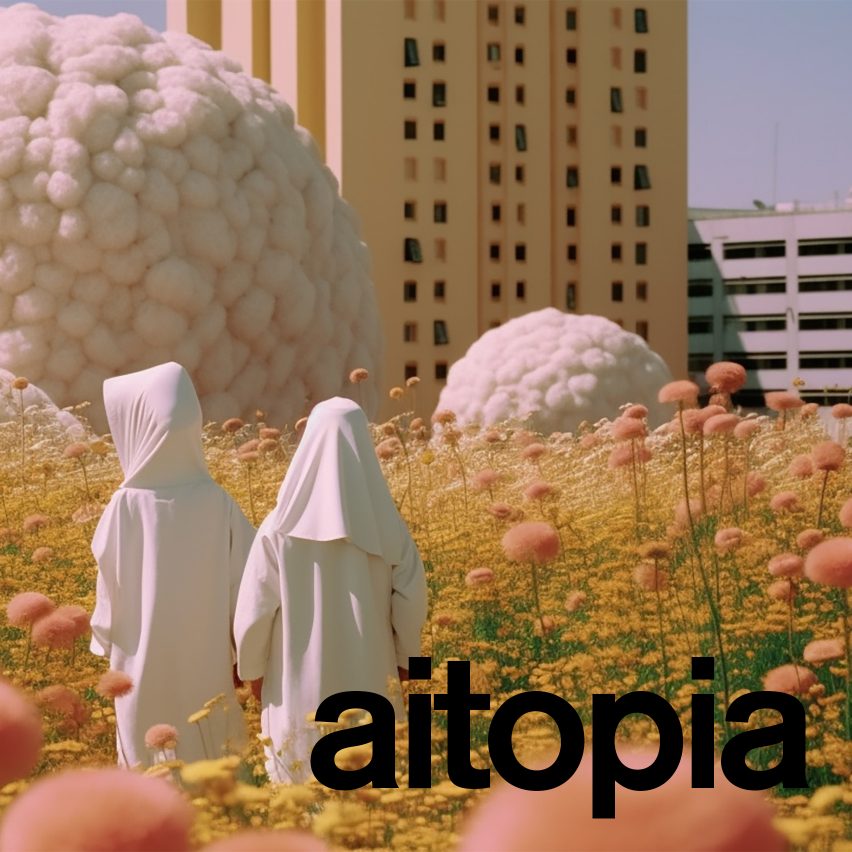
AI "raises all sorts of questions" for animals and the environment says Alexandra Daisy Ginsberg
The proliferation of AI poses major challenges for the natural world, according to tech-focused artist Alexandra Daisy Ginsberg, whose latest work uses neural networks to replicate birdsong.
Audiences are meant to question what is real and what is fake in Ginsberg's Machine Auguries installation, which recently opened at the Toledo Museum of Art in the USA.
The work features an imitation of a "dawn chorus" made up of real birds singing alongside convincing artificial intelligence (AI)-generated counterparts.
Ginsberg told Dezeen she used AI for "this quite perverse thing" in order to draw attention to what she perceives as complacency around biodiversity loss and habitat destruction, which she believes is being exacerbated by a culture of techno-optimism that is funnelling attention towards AI.

"Imagine if the amounts invested in these technologies were instead invested in protecting our environment — the environment that keeps us alive in the immediate future," she said. "Investment at that scale would protect billions of people from a disaster that is already unfolding."
"We have to ask: who gets to benefit from making AI technologies," she added. "And they're not necessarily technologies of peace."
Artwork trained AI to sing similar to birds
Ginsberg has spent more than a decade using technologies ranging from algorithms and simulations to DNA and engineered bacteria in her artworks and conducted extensive research into the field of synthetic biology, but Machine Auguries is her first work to focus squarely on AI.
The audio-based artwork was made using a type of AI called a generative adversarial network, or GAN, which Ginsberg explains employs two different neural networks: a generator and a discriminator, to get better at mimicking birdsong.
Artificial neural networks are the systems that allow advanced AI models to learn.
One network generates an output in the style of the training data it's been given — in this case audio from field recordings of birdsong — and the other evaluates it against the same data, starting a feedback cycle that continues for a number of days.
"On the first day what you get is just noise," said Ginsberg. "And over a series of days of training and learning, you start to get more and more realistic songs emerging."
In other words, the GAN engages in something akin to call and response, similar to how baby birds learn to sing, which is what attracted Ginsberg to use it in her artwork.
Machine Auguries made its debut at London's Somerset House in 2019, but Ginsberg says she was able to realise it on a much larger scale in Toledo, accessing a library of over 100,000 field recordings of birds common to the local area.
The final composition — with separate songs for 11 different species — is set within an immersive spatial environment where lighting simulates the colours of the dawn.
Moreover, the technology has improved so much between the two artworks that she could use longer audio clips for the training data. It drastically changes the experience of the artwork, she says, because now the AI birdsong is, to the human ear, indistinguishable from the real thing.
AI "raises all sorts of questions" around other species
The making of Machine Auguries raised a number of ethical issues for Ginsberg, which she began to unpick in an interview with researcher Karen Bakker, published on the Toledo Museum of Art website.
A current popular use for AI and audio data is to try to decode animal languages, which Bakker explores in her recent book The Sounds of Life: How Technology Is Bringing Us Closer to the Worlds of Animals and Plants, and which Ginsberg says is wrought with moral complexity.
For instance, there is the question of whether animals should have a right to data privacy just as much as humans.
"It raises all sorts of questions around the right to listen: eavesdropping, the ownership of these datasets, and stewardship," Ginsberg told Dezeen. "Should recordings of biodiversity be stewarded by the people whose lands these organisms live on? Should there be Indigenous stewardship, for example?"

This becomes important because depending on who has access and control, the data could be used for very different ends. A translation of what elephants are saying, for instance, would be attractive for conservationists and poachers alike.
"If we can understand what animals are saying, that means we can potentially protect them," said Ginsberg. "But it also means that we can find them and exploit them."
"AI in particular around this area raises a lot of questions that may not be at the forefront of our minds. But as we face the climate and biodiversity emergencies, this is something we need to think about."
Moratorium needed to stop tech "leading us very fast somewhere dangerous"
Given her concerns over the use of AI, Ginsberg backs calls for a moratorium on its development, such as that proposed in a recent open letter by tech leaders including Elon Musk and Apple co-founder Steve Wozniak.
She points out that there is a precedent for this from the field of biology, which faced huge disruption in the 1970s with the emergence of genetic engineering.
There, scientists called for and were able to enact a worldwide pause on experiments combining DNA from different organisms. They then gathered at the Asilomar Conference in 1975, where they discussed the risks and drew up guidelines for future work that continue to be observed.
"We simply don't have the policies in place that can protect society from the current, imminent and yet-to-appear risks of AI," said Ginsberg. "Even the present-day ramifications are super concerning, from deepfake porn to its impact on elections."

"With AI in 2023, the 'precautionary principle' is not in use," she continued. "The speed of change in the technology, versus the lack of agility of democratic policy-making, is leading us very fast somewhere dangerous that, perhaps most crucially, most of us can't foresee or fully understand."
If the technology is going to be used, Ginsberg would like to see it used for the benefit of the environment or other species. At the moment she perceives it as a danger to them.
"A copy of nature lures us to think that nature is safe and can be 'rebooted' — think de-extinction," said Ginsberg. "These technologies reassure us into thinking that we can recreate, that we can hold on to, that we can archive reality, and that's not possible. Without the natural environment, there's nothing."
Machine Auguries: Toledo is on display at the Toledo Museum of Art from 29 April to 26 November 2023. See Dezeen Events Guide for an up-to-date list of architecture and design events taking place around the world.

AItopia
This article is part of Dezeen's AItopia series, which explores the impact of artificial intelligence (AI) on design, architecture and humanity, both now and in the future.
Dezeen in Depth
If you enjoy reading Dezeen's interviews, opinions and features, subscribe to Dezeen In Depth. Sent on the last Friday of each month, this newsletter provides a single place to read about the design and architecture stories behind the headlines.